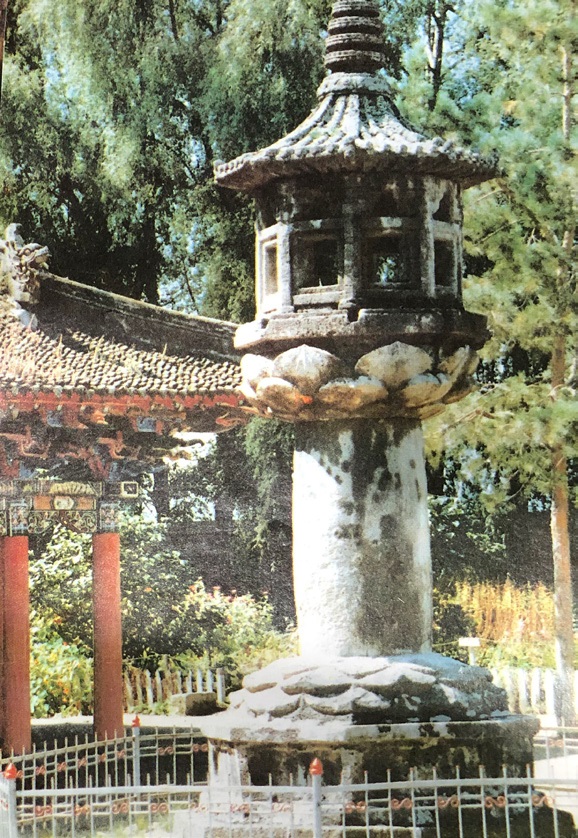|
Read 13168380 times
Connect me to:
|
TOPICS INCLUDE: Chongking food; Bohai Kingdom; Stuffed Papaya; Foods near Yangtzi RiverLetters to the Editor
Winter Volume: 2019 Issue: 26(4) pages: 5 to 6
From Lee Anne:
Heard about a new eatery serving Chongking food
near you; have you been there yet?
Lee Anne: Yes, a few times; also, the other newer
one reviewed in this issue on see pages 15 and 16. Dr. Newman:
Read about a Bohai
Kingdom, but little
information, can you
enlighten us?
Larnie in Toledo
OH: The people in this
ancient kingdom were a
minority population known
as the Mohe. They took
over in 698 CE. In the Tang
Dynasty (618 - 907 CE) were
joined and ruled by others,
and were still in existence
during the Yuan Dynasty
(1279 - 1368 CE), then taken over by the Manchu close to
1644 CE when they overthrew the Ming Dynasty. Before
that, they conquered others who ruled the Kingdom
of Zhen, were over thrown in 926 CE, became the Liao
Dynasty with fifteen kings ruling in five major cities,
fifteen prefectures, and one-hundred thirty-seven
counties; sent ambassadors to the Tang capital of
Chang’an (now known as Xian), and were famous for
weaving silk and smelting iron, the latter done outside
the capital of Shangjiang. More than one hundred fifty
years later, they were taken over by Qitan people; and
during the Liao Dynasty were ruled by others (916 CE - 1125). Their palace surrounded by a stone and earthen wall
fifty-two feet long and more than six feet high, had
ten city gates, also an inner wall eight-feet long with
its own gate. Around their palace were royal gardens.
An excavation in the 1980s found heated beds and a
Buddhist lamp (shown here) from Bohai Kingdom times
on a stone lotus flower with a pole holding another
flower that held a small Buddhist building with open
windows and a roof. Now reconstructed, a picture of it,
the first in the May 1988 China Reconstructs with a low
metal fence around it; this was the first time we ever
saw it, and now you can, too. 
From John in Boulder:
Disappointed not
to see the Salem Witch Museum. We enjoy seeing
many places you write about. They help us find
them when visiting later on. We are off to Salem
next Spring, so can we have an early look?
John: Thanks for your
appreciation. You are not the
first to request exterior shots of
places we tout. Did have some
but forgot to include them. Here
are the Salem Witch Museum is
on this page, the Peabody Essex
Museum on page 6, and a map of
Salem below. 

Editor:
Know the Chinese use papayas
and we do see them in their
markets. What about a recipe?
Henrietta in NY: Yours is
the first request for a picture and
recipe of this fruit. We once stuffed one with shrimp;
a fancier one follows. | Shark's Fin Stuffed Papaya |
|---|
Ingredients:
1 1/4 pound shark’s fin, cooked and diced
3 slices fresh ginger, peeled
1 scallion, knotted
3 Tablespoons skinless chicken thigh meat, diced
3 Tablespoons skinless duck breast, diced
1½ to 2 pounds of papaya, keeping stem end
1 large dried Chinese mushrooms, stem discarded
2 cups chicken broth, divided
cheese cloth and three toothpicks
Preparation:
1. Prepare shark’s fin, soaked in cold water over night,
then in morning, drain and discard water, rinse it with
fresh water, and divide shark’s fin and tie it in two
pieces of cheese cloth.
2. Cut one-inch off the top of the papaya, save it, discard
its seeds, and rinse again with cold water. Wrap shark’s
fin pieces in two pieces of cheese cloth, then put them
and half the broth, the ginger and scallion knot, and
place the papaya stem end up, in a Chinese soup bowl
holding it upright.
3. Put this bowl in a deep pot with two cups of cold
water around it, cover the pot and bring its water to
the boil, reduce the heat, and simmer for one hour;
then discard ginger and scallion, discard the water, and
open the shark’s fin bundles into the papaya.
4. In that heat-proof bowl, add one cup of water there or
on the bottom of the pot, add rest of the broth into the
papaya with chicken, duck, and mushroom pieces into
and around it and cover the papaya with toothpicks,
then cover the pot and bring it to the boil, reduce heat,
and simmer for half an hour, then take papaya out
carefully, remove and discard top and toothpicks.
5. Cut papaya into one-inch pieces, mix it with the
shark’s fin, duck, chicken, and mushroom pieces and
put them into individual-pre-heated soup bowls, and
serve.
|
Dear Newman:
Read that foods from around the Yangtzi River are
unique; what makes them so?
Charlie from Beijing:
More than any other part of China, here are many
vegetarian followers of Mahayana and others Buddhists
from Fujian, Huai Yang, Jiangsu, Shanghai, or Zhejiang.
They make and use lots of red wine lees, use it to season
pounded pork shank called ‘swallow skin’ the Chinese
call yanpi, and pound it paper-thin and cut it into
wafer-like pieces. One recipe we read calls it Drunken
Scarlet Eels, and marinates the skinless eel pieces in
this red wine lees with five-spice and curry powders,
drains them, dips them in batter, and fries them until
they are light tan, then eats them. 
|





